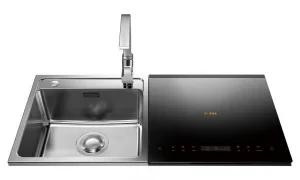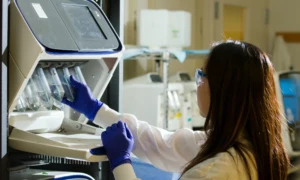Introduction:
Demodex blepharitis is a common eye condition caused by an overpopulation of Demodex mites on the eyelids. These microscopic parasites, Demodex folliculorum and Demodex brevis, can lead to various ocular symptoms, including redness, itching, burning, and inflammation of the eyelids. In this comprehensive guide, we will explore the diagnostic and treatment strategies, clinical assessment, and market trends analysis for Demodex blepharitis.
Key Players:
Eyelid Examination-
- TearScience Inc.
- Optovue Inc.
- Heidelberg Engineering Inc.
- Tomey Corporation
- Konan Medical USA Inc.
- Keeler Ltd.
Epilation and Microscopic Examination–
- Haag-Streit AG
- Enova Illumination
- E-Eye
- NIDEK CO., LTD.
In vivo Confocal Microscopy (IVCM)-
- Heidelberg Engineering
- Haag-Streit AGm
- Optovue Inc.
- Carl Zeiss Meditec AG
- Huvitz Co., Ltd.
Diagnostic Analysis:
a. Symptoms:
- Patients may experience symptoms such as itching, burning, redness, and foreign body sensation in the eyes.
- Crusty eyelashes, blurred vision, and increased eye dryness can also be indicative.
b. Clinical Examination:
- Ophthalmologists and optometrists perform slit-lamp examinations to check for mite infestation, lid margin inflammation, and cylindrical dandruff.
- Eyelash sampling may be done to identify Demodex mites under a microscope.
c. Advanced Diagnostic Tools:
- In vivo confocal microscopy and molecular testing can provide a more detailed analysis of Demodex presence and severity.
Treatment Analysis:
a. Lid Hygiene:
- Warm compresses and gentle eyelid scrubs with mild cleansers can help reduce mite populations and maintain lid hygiene.
b. Medications:
- Topical and oral medications, such as tea tree oil-based products or metronidazole, can be prescribed to kill Demodex mites.
- Lubricating eye drops or ointments may alleviate dry eye symptoms.
c. Antibiotics:
- In severe cases with bacterial co-infections, antibiotics may be necessary to control inflammation.
d. Clinical Follow-up:
- Regular follow-up appointments are essential to assess treatment progress and make necessary adjustments.
Browse More Report:
Clinical Assessment:
a. Severity Grading:
- Eyecare professionals use grading scales to assess the severity of Demodex blepharitis, helping guide treatment decisions.
b. Ocular Surface Evaluation:
- Tear film assessment, Schirmer’s test, and meibomian gland assessment are conducted to gauge the impact of Demodex on the ocular surface.
c. Patient-Reported Outcomes:
- Patient-reported symptoms and quality of life measures are considered when evaluating treatment success.
Market Trends Analysis:
a. Increased Awareness:
- Growing awareness of Demodex blepharitis among both patients and eyecare professionals has led to earlier diagnosis and treatment.
b. Product Innovation:
- The market for Demodex blepharitis treatments has seen innovation in the form of new medicated wipes, eyelid cleansers, and targeted therapies.
c. Research and Development:
- Ongoing research into Demodex mite biology and treatment options may lead to more effective therapies in the future.
d. Global Prevalence:
- Demodex blepharitis is a global concern, with varying prevalence rates in different regions, which affects market dynamics.
Conclusion:
Demodex blepharitis, though often underestimated, can significantly impact the ocular health and quality of life of affected individuals. Timely diagnosis, appropriate treatment, and regular clinical assessment are crucial in managing this condition effectively. As market trends continue to evolve, advancements in diagnostics and treatments offer hope for better management of Demodex blepharitis in the future.
Browse through more Disease Landscape Insights LLP Research Reports.
Related Blog:
Xdemvy: Lotilaner as a Revolutionary Demodex Blepharitis Treatment









































